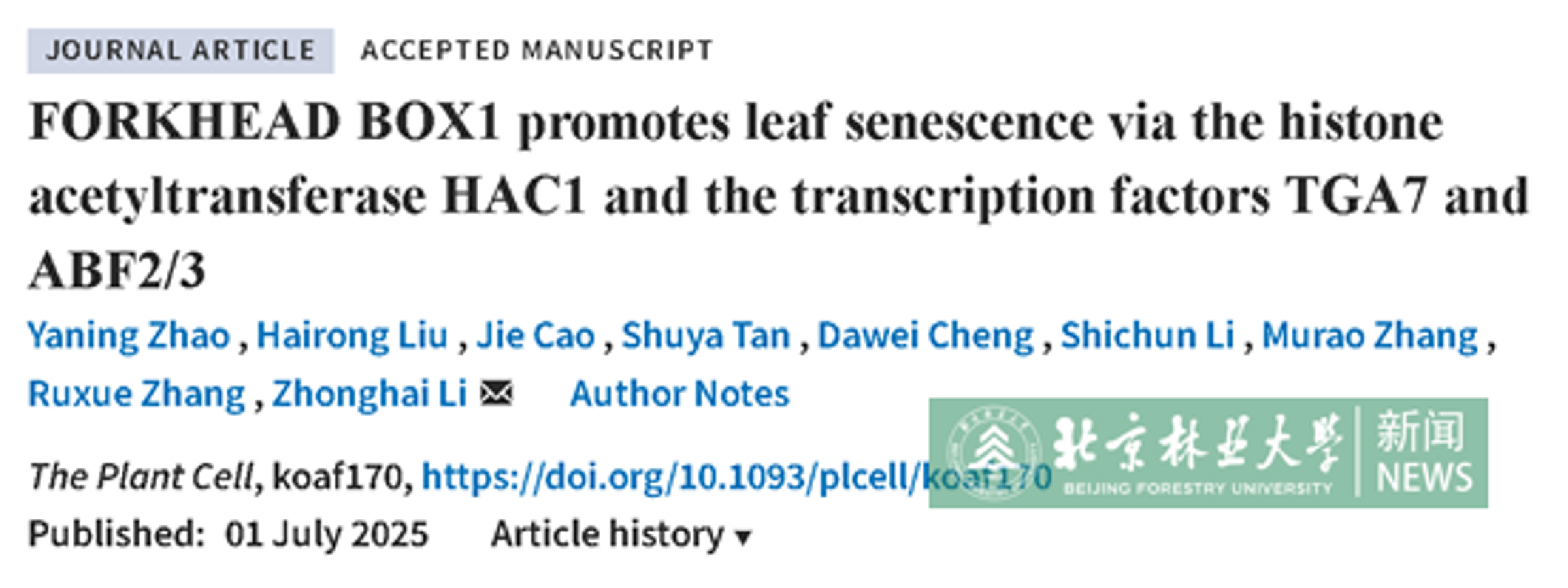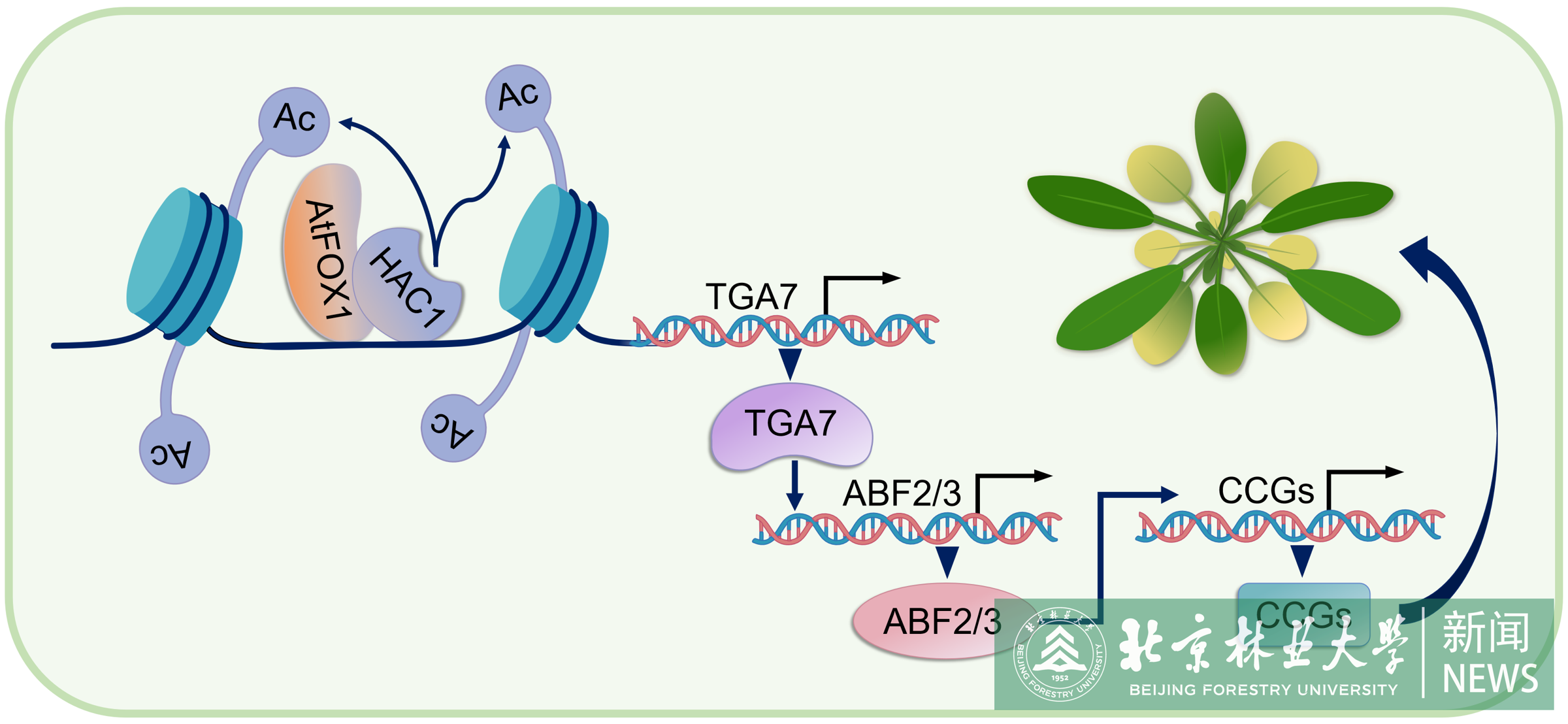Latest news
Recently, a research paper titled "FORKHEAD BOX1 promotes leaf senescence via the histone acetyltransferase HAC1 and the transcription factors TGA7 and ABF2/3", authored by Professor Li Zhonghai' team from the National Key Laboratory of Tree Genetics and Breeding at the College of Biological Sciences and Biotechnology, has been published online in the prestigious plant biology journal Plant Cell (Q1, Top-tier journal).

Leaf senescence is a tightly regulated developmental process influenced by complex genetic and epigenetic networks. Here, we identified AtFOX1, a previously uncharacterized forkhead box (FOX) protein in Arabidopsis (Arabidopsis thaliana), as a positive regulator of leaf senescence. Loss-of-function AtFOX1 mutants exhibit delayed senescence, whereas AtFOX1 overexpression accelerated this process. Mechanistically, AtFOX1 binds to the GTAAAA motif in the TGACG SEQUENCE-SPECIFIC BINDING PROTEIN 7 (TGA7) promoter, recruiting ARABIDOPSIS HISTONE ACETYLTRANSFERASE OF THE CBP FAMILY 1 (HAC1) to enhance histone H3 lysine 9 (H3K9) acetylation and promote TGA7 transcription. Genetic analyses demonstrated that AtFOX1-mediated senescence requires HAC1 function, while TGA7 acts downstream of HAC1. Furthermore, TGA7 directly activates ABA-RESPONSIVE ELEMENT BINDING FACTOR 2 (ABF2) and ABF3, key regulators of age- and ABA-induced leaf senescence. Disruption of ABF2/3/4 function mitigated the premature senescence phenotype resulting from TGA7 or AtFOX1 overexpression. Collectively, our findings reveal an AtFOX1-centered regulatory module controlling leaf senescence in Arabidopsis.

Professor Li Zhonghai from the College of Biological Sciences and Biotechnology is the corresponding author. Doctoral candidate Zhao Yaning, Cao Jie, and former graduate student Liu Hairong are co-first authors.
This work was supported by the Fundamental Research Funds for the Central Universities (BLX202120), the National Natural Science Foundation of China (32470367 and 32170345 to Z.L.), the Beijing Municipal Natural Science Foundation (5232015 to Z.L.), the Open Research Fund of the National Center for Protein Sciences at Peking University in Beijing (KF-202304 to Z.L.), and the startup funding for plant aging research from Beijing Forestry University.
Paper link: https://academic.oup.com/plcell/advance-article/doi/10.1093/plcell/koaf170/8180597?searchresult=1
Written by Li Zhonghai
Translated and edited by Song He
Reviewed by Yu Yangyang












